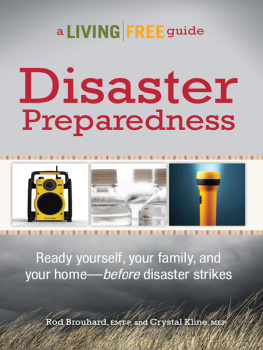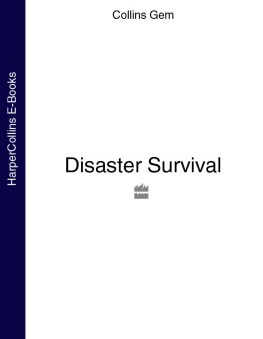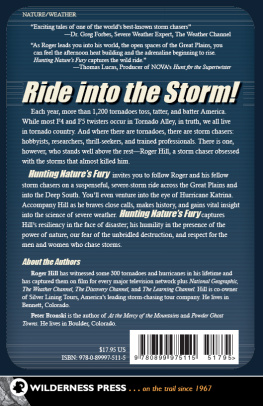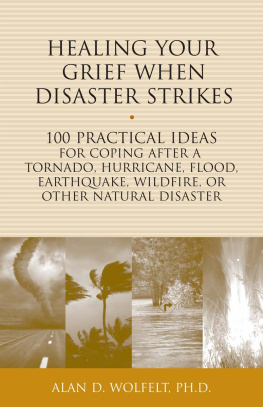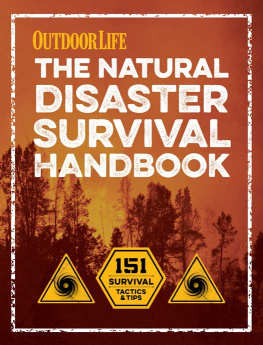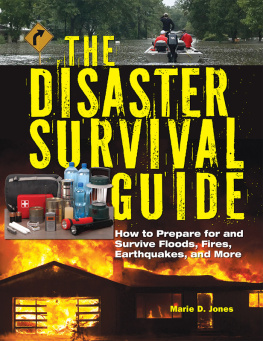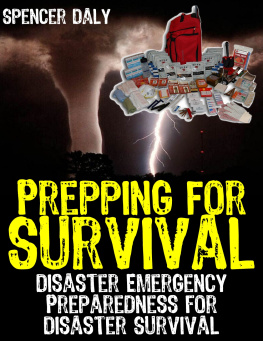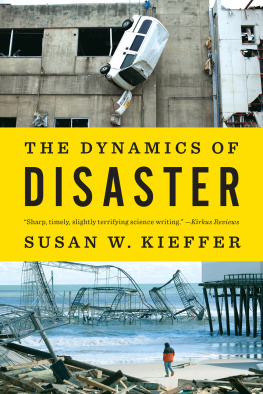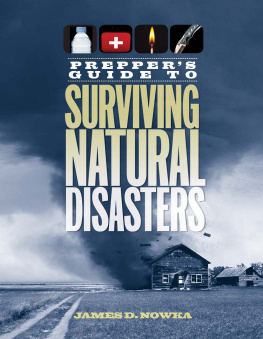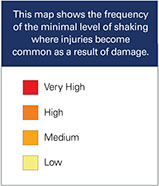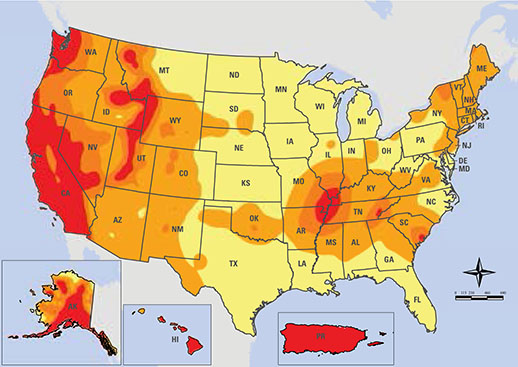Table of Contents
How to Prepare for an Earthquake
Earthquakes can bring mild to violent shaking and can occur anytime, anywhere. This guide can help you protect yourself, your family, and your property before, during, and after an earthquake.
KNOW YOUR RISK
WHAT: An earthquake is the sudden, rapid shaking of the earth, caused by the breaking and shifting of subterranean rock as it releases strain that has accumulated over a long time. Initial mild shaking may strengthen and become extremely violent within seconds. Additional earthquakes, called aftershocks, may occur for hours, days, or even months. Most are smaller than the initial earthquake but larger magnitude aftershocks also occur.
WHEN: Earthquakes can happen at any time of the year and occur without warning.
WHERE: All U.S. states and territories are at some risk for earthquakes. The risk is higher in identified seismic zones.
IMPACT: Larger earthquakes may cause deaths, injuries, and extensive property damage. Most casualties and injuries during an earthquake occur when: people fall while trying to walk or run during the shaking; when they are hit by falling, flying, or sliding household items or non-structural debris; and/or when they are struck or trapped by collapsing walls or other parts of the building. Transportation, power, water, gas, and other services may be disrupted. In some areas, shaking can cause liquefaction when the ground acts more like a liquid. When this happens the ground can no longer support the weight of a building. In coastal areas, earthquakes under the sea floor can cause tsunamis.
Forecasted Frequency of Earthquake Shaking
This level of shaking is capable of: cracking windows; knocking dishes, glassware, knickknacks, and books off shelves and pictures off walls; moving or overturning furniture; and cracking weak plaster, adobe buildings, and some poorly built masonry buildings.
This page provides an overview of protective actions to take before, during, and after an earthquake. Additional information is provided in the following pages for each phase.
1 BEFORE: PREPARE
Take action now, before an earthquake hits.
- Secure items that might fall and cause injuries (e.g., bookshelves, mirrors, light fixtures).
- Practice how to Drop, Cover, and Hold On by participating in a ShakeOut earthquake drill (www.ShakeOut.org)
- Store critical supplies and documents
- Plan how you will communicate with family members.
2 DURING: SURVIVE
As soon as you feel the shaking,
- DROP down onto your hands and knees so the earthquake doesnt knock you down.
- COVER your head and neck with your arms to protect yourself from falling debris. If you are in danger from falling objects, and you can move safely, crawl to a safer place or seek cover (e.g., under a desk or table).
- HOLD ON to any sturdy covering so you can move with it until the shaking stops.
3 AFTER: RECOVER
When the shaking stops, before you move, look around for things that might fall or for dangerous debris on the ground.
- If you are in a damaged building and there is a safe way out through the debris, leave and go to an open space outside, away from damaged areas.
- If you are trapped, do not move about or kick up dust.
- If you have a cell phone with you, use it to call or text for help.
- Tap on a pipe or wall or use a whistle, if you have one, so that rescuers can locate you.
- Once safe, monitor local news reports (e.g., radio, TV, social media, and cell phone text alerts), for emergency information and instructions.
Protect Yourself Before, During, and After an Earthquake
HOW TO RECOGNIZE THAT AN EARTHQUAKE IS HAPPENING
You may experience a shaking or a rolling motion in the walls, floor, or ground. This movement may grow more extreme within seconds.
If you do not DROP down immediately, you may be knocked off your feet. You may not be able to walk or run.
Objects may fall off shelves, light fixtures may swing or fall from ceilings, or tall furniture may fall over.
There may be dust or glass particles in the air or on the ground. You may hear noises similar to a heavy truck or train passing nearby.
EMERGENCY NOTIFICATIONS
Although there is no advance notice of an earthquake, emergency information will be provided immediately after through radio and TV broadcasts and via Wireless Emergency Alerts texted to cell phones. In addition to commercial radios, a National Oceanic and Atmospheric Administration (NOAA) Weather Radio broadcasts alerts and warnings directly from the National Weather Service for all hazards. You may also sign up in advance to receive emergency notifications from your local emergency services.
Free smart phone apps, such as those available from FEMA and the American Red Cross, provide information about shelters, how to provide first aid, and how to seek assistance for recovery. (Search for the FEMA App or Red Cross Apps on your iPhone, android, or other mobile device). The U.S. Geological Survey manages the Earthquake Notification Service, which provides free notification emails when earthquakes happen in your area or anywhere in the world. Visit: https://sslearthquake.usgs.gov/ens for more information.
DEVELOP A COMMUNICATIONS PLAN
Your family may not be together when an earthquake hits, so it is important to know how you will contact one another and how you will get back together in case of an emergency. Landline and cellular phone systems are often overwhelmed following a disaster, so you may need to use text messaging or social media to communicate with family and friends. Keep important numbers written down in your wallet in case you cannot access the contact list in your phone.
Here are a few easy steps to start your emergency communication plan:
- Understand how to receive emergency alerts and warnings. Make sure all household members are able to get alerts about an emergency from local officials. Check with your local emergency management agency to see what is available in your area.
- Discuss family/household plans for disasters that may affect your area and plan where to go. Plan together in advance so that everyone in the household understands where to go during a different type of disaster like a hurricane, tornado, or wildfire.
- Collect information. Create a paper copy of the contact information for your family that includes:
- phone (work, cell, office)
- email
- social media
- medical facilities, doctors, service providers
- school
- Identify information and pick an emergency meeting place. Things to consider:
- Decide on safe, familiar places where your family can go for protection or to reunite.
- Make sure these locations are accessible for household members with disabilities or access and functional needs.



